Ask Ethan: How Big Will The Universe Get?
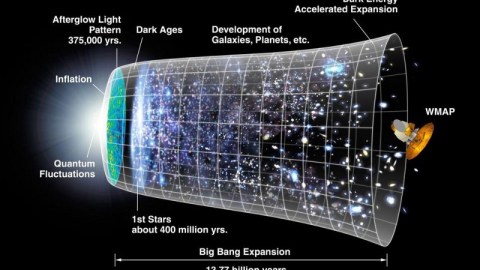
Dark energy means that the Universe’s expansion is accelerating. But how big will it get, and how fast?
Our Universe, as we observe it today, is a vast, enormous place, full of stars, galaxies, clusters of galaxies, and vast cosmic voids in between them. As time goes on, gravitation will continue to pull these large concentrations of matter towards one another, but the expansion of the Universe works to drive them apart. 20 years ago, we discovered the ultimate fate of the Universe: the expansion rate, owing to dark energy, will defeat gravitation, meaning that our Universe will never turn around and recollapse. As we continue to grow, though, how big will the Universe get, and when? That’s what Rudy Siegel (no relation) wants to know for this week’s Ask Ethan:
The current estimate for the diameter of the universe is 93 billion light years. With the current acceleration of the universe measured by redshift, and the future exponential acceleration, how long until “we” hit a diameter of 100 billion light years?
To find out the answer to this specific question and so much more, let’s take a look at what our Universe is like today.
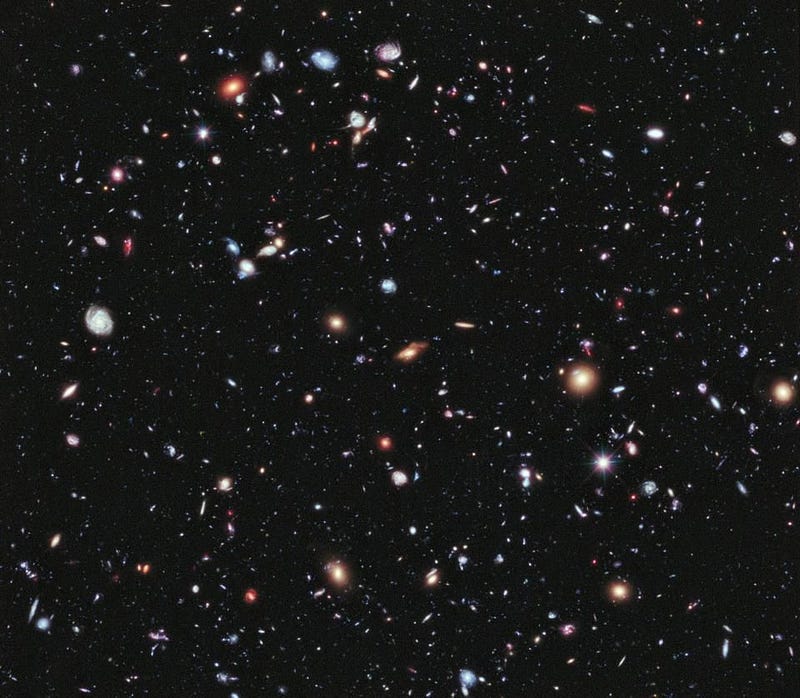
Nearby, the Universe is full of galaxies that are clumped and clustered together. The farther away we look, distance-wise, the farther back in time we’re looking as well. Within our own galaxy, a star that’s 10 light years away is being seen as it was 10 years ago: it takes 10 years for light, moving at the speed of light, to traverse that distance. But at extremely large distances, the expansion of the Universe plays a role. A galaxy whose light is arriving after a 10 billion year journey will be farther away than 10 billion light years today; it will be more like 16 billion light years distant. The reason for this? Light gets emitted, travels through space, but the expanding space pushes all the unbound objects apart. This includes practically every distant galaxy outside of the local group.
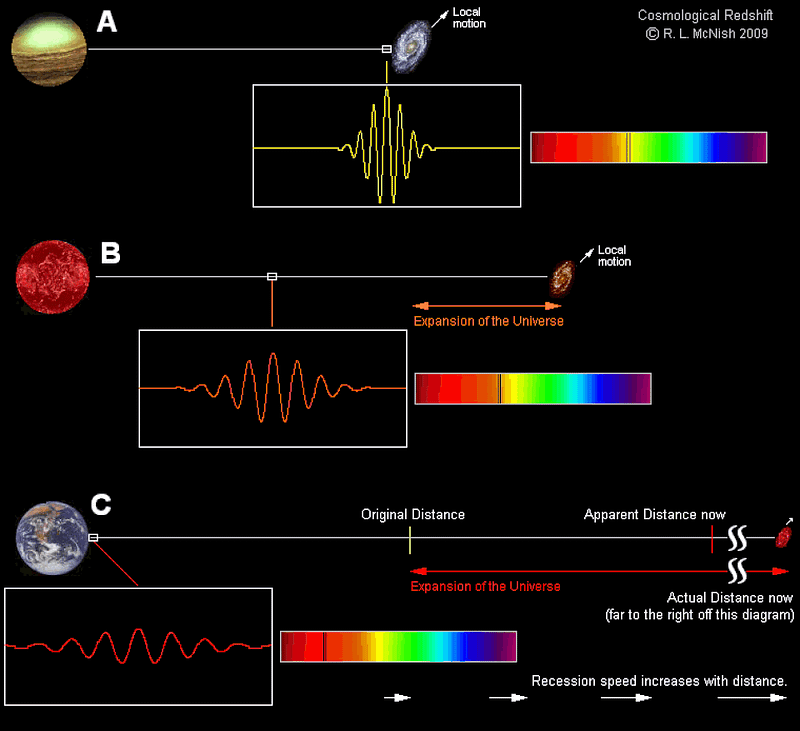
We’ve managed to successfully determine what the Universe is made of, and we’ve also measured what the expansion rate is today. Combine these two pieces of information together under the framework of General Relativity, and the laws of physics automatically determine how the Universe expanded over its history and how it will expand infinitely far into the future. Based on what we know so far, the part of the Universe that’s accessible to us today, 13.8 billion years after the Big Bang, is now 46 billion light years in radius.

There’s likely much more Universe, in all directions, beyond that point. Where we are, though, we can only observe the parts of it that where light has had enough time to reach us since the Big Bang. Based on the observed expansion rate, and the fact that we know our Universe is made of:
- 68% dark energy, which acts like a cosmological constant,
- 27% dark matter, which dilutes with volume as the Universe expands,
- 4.9% normal matter, which acts like dark matter but also collides with itself,
- 0.1% neutrinos, which acts like matter today but like radiation when it moves close to the speed of light, and
- 0.01% photons, which dilute with volume and also have their wavelengths stretch-and-cool as the Universe expands,
we can extrapolate which components determined the expansion rate throughout the Universe’s history.
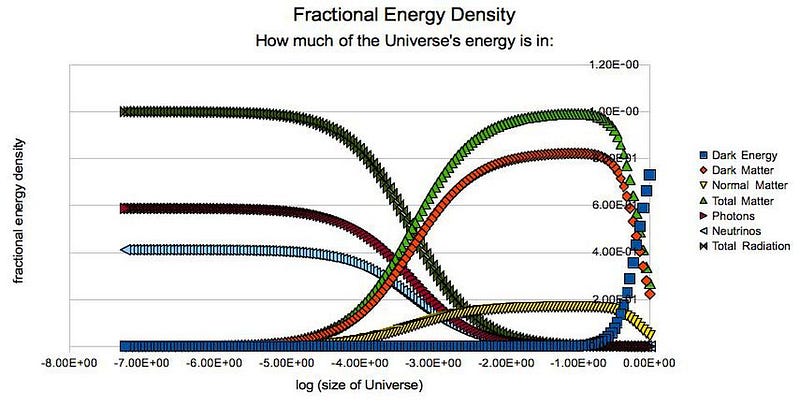
Note that, extremely recently, dark energy has come to dominate. As we move forward into the future, it will be the sole determining factor in the Universe’s expansion rate. As the Universe continues to expand, the matter density — both normal and dark — continues to drop, but the density of dark energy will remain constant. Because the expansion rate (squared) is proportional to the energy density of the Universe, that means the constant density that dark energy gives you means the expansion rate asymptotes to a constant. Based on the current expansion rate as observed by Planck, 67 km/s/Mpc, that means two big things for the future:
- the expansion rate will asymptote to 55 km/s/Mpc, when only dark energy is important, and
- this expansion rate will cause distant objects to recede in an accelerating fashion, and the Universe will expand exponentially.
(Note that an Mpc is a megaparsec, an astronomical unit of distance that equates to about 3.26 million light years.)
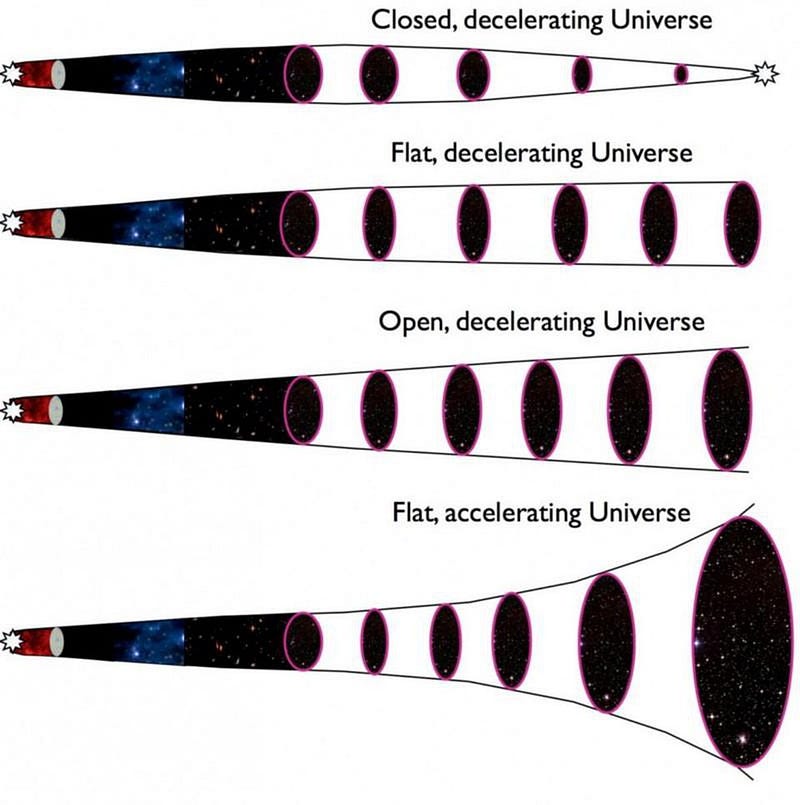
Think about why this is: why a constant expansion rate means that distant objects accelerate, and that the Universe expands exponentially. Imagine a galaxy 10 Mpc away. If the expansion rate is 55 km/s/Mpc, then it appears to move away from us at 550 km/s due to the Universe’s expansion. Over time, it moves farther and farther away. How fast does it appear to recede, then?
- When it’s 10 Mpc away, it recedes at 550 km/s.
- When it’s 20 Mpc away, it recedes at 1100 km/s.
- When it’s 40 Mpc away, it recedes at 2200 km/s.
- When it’s 80 Mpc away, it recedes at 4400 km/s.
And so on. The more time goes by and the farther away the galaxy is, the faster it recedes from view. But here’s what you have to realize: the amount of time to go from 10 to 20 Mpc is the same as to go from 20 to 40, or 40 to 80, or 1000 to 2000, and so on. In a Universe dominated by dark energy, this is how exponential expansion works.
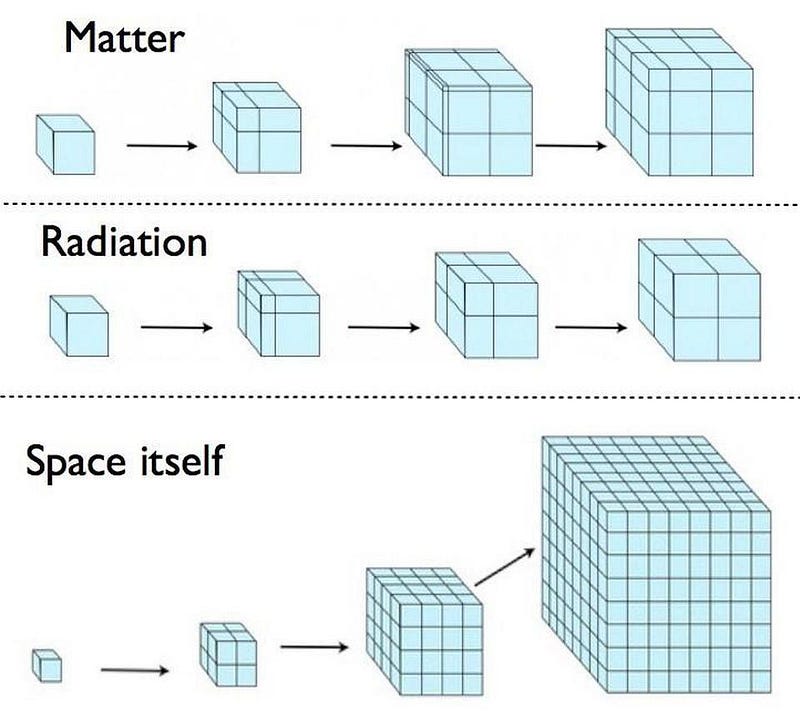
So if we wanted to plot out what the Universe’s apparent size, in radius, is, as a function of time, all we’d have to do is run the math. The results are simple, straightforward, and easy to read off. If you hold a ruler up to the graph, you can see that in the very distant past, the line has a certain slope that indicates radiation domination. In the more recent past, the Universe was matter dominated, where the slope of the line changes. And then the line changes into an exponential curve, when dark energy takes over from matter as the matter density drops further. That’s where we’ve just started living today.
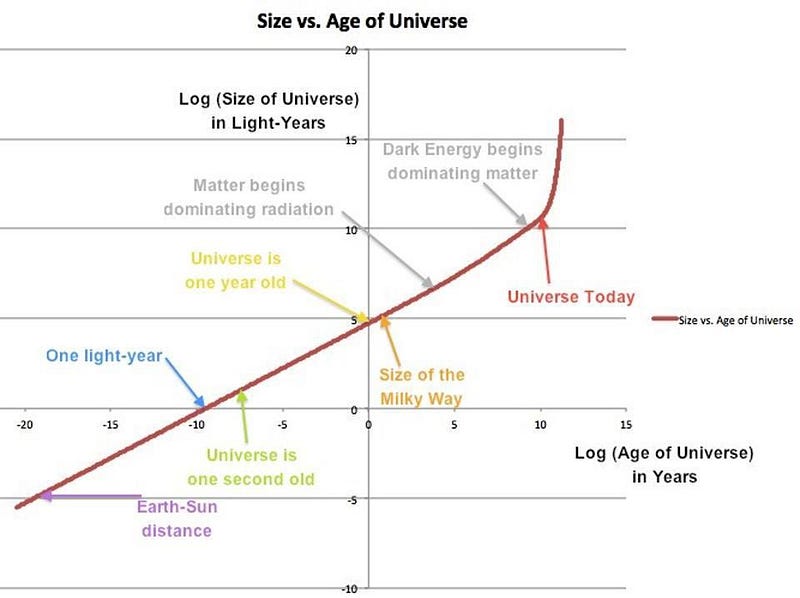
Our observable Universe, as we know it right now, is 92 billion light years in diameter. At 13.8 billion years of age, that’s how far we’ve managed to come.
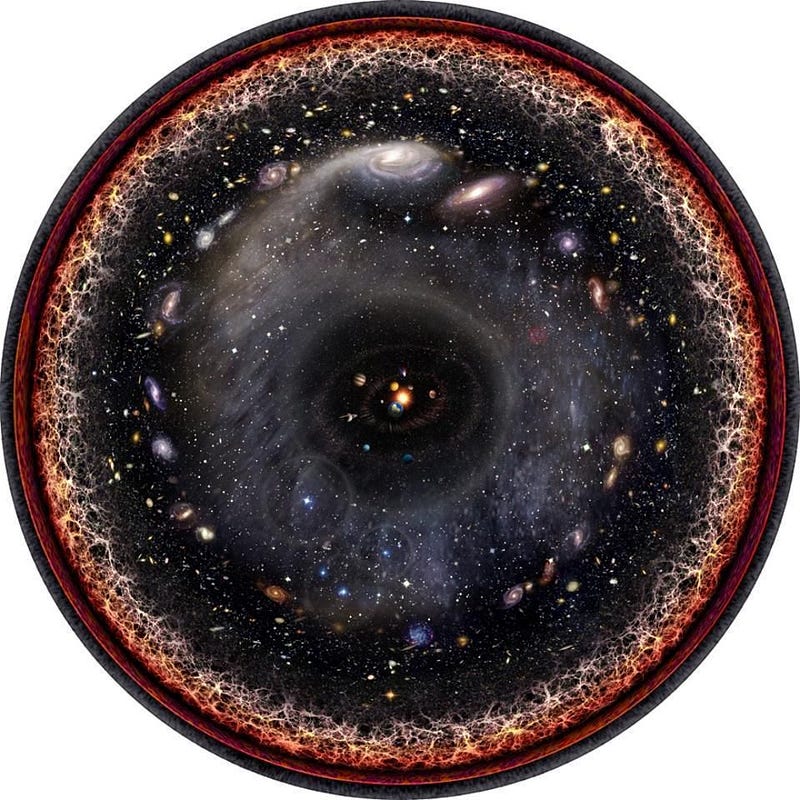
When will the Universe reach 100 billion light years in diameter? When it’s 14.9 billion years old, just 1.1 billion years from now. At that point, the Universe will be 73% dark energy and the expansion rate will have dropped to 65 km/s/Mpc. Not much of a change. But as we go forward in large steps, the changes get very dramatic.
By time the Universe is 24.5 billion years old, a little more than 10 billion years in the future, it will be 94% dark energy, the expansion rate will be 57 km/s/Mpc, but the observable Universe will be 200 billion light years in diameter.
At an age of 37.6 billion years, the Universe will be 99.4% dark energy, the expansion rate will be 55.4 km/s/Mpc, and now the Universe will be 400 billion light years in diameter.
And now, every 12.2 billion years after that, the size of the Universe will double, with the expansion rate leveling off at 55.4 km/s/Mpc. This means the Universe will hit 1 trillion light years in diameter when it’s 54 billion years old; 10 trillion light years at 86 billion years; 100 trillion light years at 118 billion years; and a quadrillion light years in diameter at 149 billion years. By time the Universe is ten times its current age, it will be nearly ten thousand times its current size. That’s the power of exponential expansion.

As it stands today, the observable Universe contains somewhere around 2 trillion galaxies. As we move ahead into the very distant future, all of that matter that isn’t a part of our local group will recede from us towards these distant horizons of the Universe. What’s now contained within a sphere that’s 93 billion light years in diameter will be stretched out over larger and larger volumes, leading to a Universe where the average density eventually drops to zero, and does so uncomfortably quickly. If you were born when the Universe was ten times its current age, Milkdromeda, which is what our local group will merge into, would be the only galaxy you could see in the Universe for trillions of light years. Enjoy our Universe the way it is while we’re here, because it’s expanding away from us at this exponential rate with every moment that passes.
Send in your Ask Ethan questions to startswithabang at gmail dot com!
Ethan Siegel is the author of Beyond the Galaxy and Treknology. You can pre-order his third book, currently in development: the Encyclopaedia Cosmologica.




